The Rollin Coal Gravel Grinder: Embracing the Unexpected
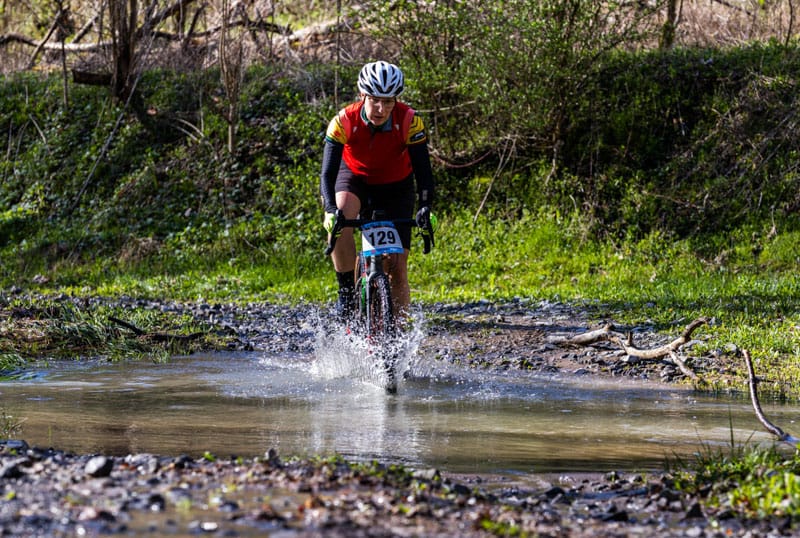
The Rollin Coal Gravel Grinder is 2024's first of five events in the West Virginia Gravel Series. Word on the street is it's the gnarliest. I've only done one other, GRUSK, and I hope the other three rattle my bones a little less than Rollin Coal. That said, it wasn't only the course that tested my limits but an unexpected change in plans that threatened my finish.
The Course
Rollin Coal is the perfect name. The Long, Medium, and Short distances start in Shinnston, WV, and meander through the northern coal fields of West Virginia—a land full of mining history and active production. On top of that, the course is a roller coaster. Gravel riding in West Virginia usually involves mountainous climbs, but Rollin Coal's are steep and punchy, and the descents are fast and rocky. And over the Long course of 77 miles, there are many!

Looking for Gucci gravel? Look elsewhere. The course traverses muddy abandoned mining roads, deeply rutted 4×4 roads, mud pits, and creeks. Sure, there is some pavement—just enough for you to get comfortably lulled into pedaling a steady pace before the next rock show. As to the gravel roads, imagine a 5-year-old in a candy store, except they are picking out the stone size. The bigger, the better. "Look, Mommy, this one's as big as my fist!"
My Steed
However, none of this was a surprise to me. I had done my research and knew this course was chunky, muddy, technical, and steep. I considered riding my cross-country mountain bike, with 2.25" wide tires, a 120mm front fork, and rear suspension.
But I didn't. I chose my new gravel bike, with its skinny (to me) 45c tires and drop bars. Sure, I had popped on a new seat post and stem that promised to lessen the gravel rattle, but it was nothing like my cushy XC bike. By comparison, it's light as a feather and, in theory, allows for better positioning over long distances. But my MTB offers a much better climbing gear. The climbs are where I lose time.
The truth is, I wanted to see what this new bike and I could handle together. I wanted to put it through its paces. Oh, and everyone else was riding gravel bikes. And what about all those road miles?
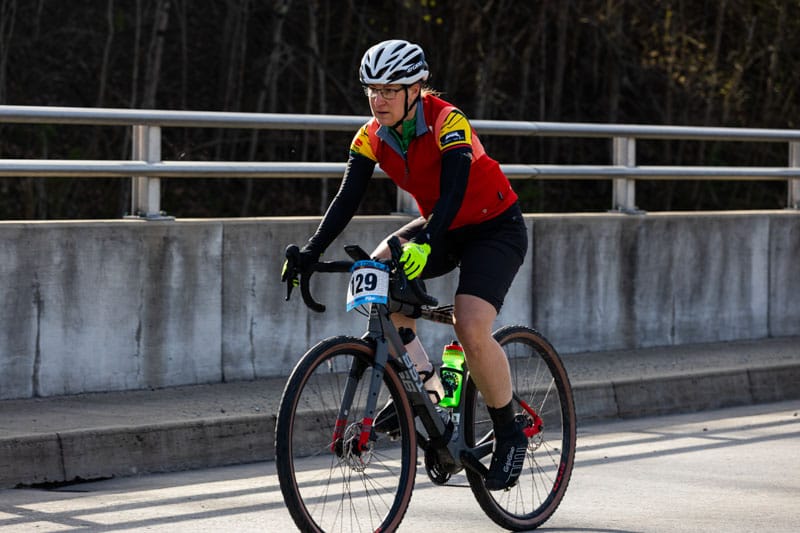
My Sustenance
Okay, we've established that the course is challenging, and I feel under-biked. Riding this kind of gravel in West Virginia is not uncommon for me. Sure, I walked through mud and down ravines more than I care to admit, wasted time cleaning mud out of my cleats just to step in more mud, gave up on clean cleats, and accepted one crash after another. However, these were not my biggest problems.
Food and water sustain life. And both are crucial to maintaining pace on a long ride or race. Many long races are described as eating contests on a bike, and I've been honing my skills for years.
A quick bike nutrition primer: You need sugar. Your body can hold about 2,000 calories worth of glycogen in your muscles, plus a little in your liver. Glycogen needs to be replenished by eating carbohydrates and drinking water. And since you lose sodium through sweat, you'll need to replenish that, too. Ride full-gas for two hours or more without food, and chances are you'll experience the dreaded, energy-drained "bonk."
Nobody wants to bonk. Especially when you're in the middle of nowhere without cell service, riding alone past angry, chained-up dogs.
I'll save my complete nutrition plan for another story, but it's solid. I've built it out to include a high-carb drink mix with added electrolytes, gels, and some solid food. I drink decaf coffee, so I carefully meter out caffeine during races. I have a timer on my bike computer to tell me when to eat and drink. I know how many swigs I need to take from the bottle to get the carbs I want. I know about how many calories I spend each hour and how much to replace. It's getting pretty dialed, and Rollin Coal was a true test of this system.
Until the system disappeared.
Pedal for Your Lunch
My plan was to replenish my food and water at the aid station stops at miles 30 and 60. I had measured out my mix into two baggies, counted out my snacks, and loaded up spare tires and chain lube in my drop bag.
I got to the first checkpoint at mile 30 with plenty of time to spare, but I had already put in a big effort. The volunteers filled my bottles with fresh water, and I added the drink mix and gulped down some extra water. This was a decision point—I could keep going and do the entire 77 miles that I signed up for or cut out the extra 30-mile loop and do 47.
Of course, I opted for the 77-mile course. I despise getting pulled, and I'm certainly not going to do it to myself. Besides, I felt pretty good.
It turns out that almost one-third of the riders who signed up for the 77 miles opted to shorten the route to 47 miles. That explains why there was only one person behind me for a while. Once his tire's sidewall blew and he was carted away, I was the last one on course.
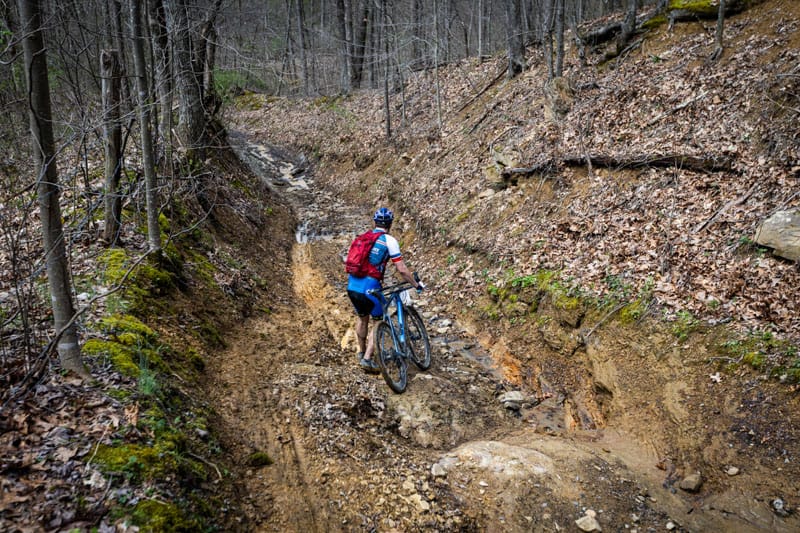
The aid station didn't know I was still on course by some flub of communication (easy enough to do in the middle of nowhere without cell service). About three miles from my next refuel, I heard they were pulling it. I had just completed an epic 57 miles and was down to crumbs and drops. More than that, my morale was hanging in the balance. The race was on! I needed that resupply!
I flew to the aid station. What did I have to lose? A volunteer drove ahead to alert them I was on my way.
As I pulled up to mile 60, I saw two trucks. The tent was gone, but the vehicles gave me hope. I made it!
"What do you need?" asked the volunteers. "My drop bag and water," I replied. "Oh," they said. "It's already on the way back with the other volunteers."
My heart sank, and I felt like I'd swallowed one of those fist-sized rocks. My throat tightened. Tears filled my eyes. I could feel my hands starting to shake. I didn't want to break down in front of these people. But I was freaking out inside. I knew the next 17 miles were tough, and I knew I needed food and water. There are no gas stations, no mom and pops between here and there. I guess I could knock on a door.
I stood there, not speaking, while the volunteers asked how to help. They started giving me whatever water and Gatorade they had from their bottles. I added some electrolytes that I carried. They handed me packs of Starbursts and some other candy I can't remember. The same course martial that spared me some lube for my creaky chain donated whatever ride food he had in his truck.
As I sucked down a life-saving gel, I saw "75 mg caffeine" on the wrapper. Oops. That was more than I'd had all day. Everything he gave me had caffeine. Not sure I could eat it, I stuffed it in my pockets and thanked him profusely. Then I was off.
Desperation
I just kept pedaling. There was no sense ruminating on the past. I knew wasting energy on negative thoughts was pointless. I was pissed off for all of five minutes and then went on to make a new nutrition plan: eating whatever I had.
I don't know whether it was the slug of caffeine or sugar bomb Starbursts, but my gut went to hell in a handbasket. I still had the energy to pedal but needed to stop eating straight sugar and caffeine. I had one GU waffle left, and I dreamt about it until I couldn't take it anymore: down the hatch.
I would have to ride out this thing on what I took in from breakfast to mile 60—and this awful-tasting Gatorade! At one point, I passed an open pack of Cliff Blox on the ground. I turned around to see if they had caffeine. As I studied the smashed dirt and grit-covered orange blobs, I realized I was desperate…but not that desperate.
The course ended on a steep uphill section of singletrack. I thought it was a sick joke, but I get it. It is the thing to do: end gravel races on singletrack. Pulling into the event location, I could see a few of my friends who raced other distances and one who smoked me by 2.5 hours. I was astonished and grateful. They waited around for me. The party was over, the band was gone, and the food truck was packing up.
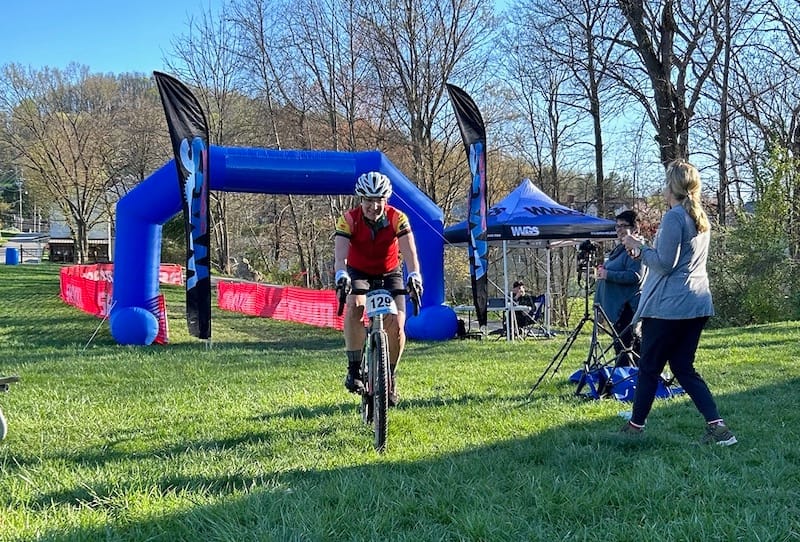
But I won—literally and figuratively. Only three women signed up for the 77-mile course. We all finished, but I was in the 40+ category, so I took the top step on the podium.
But more than that, I'd persevered through the unexpected nutrition debacle. Despite all my planning, I still ended up running on empty and feeling like shit in the gut at the end. But if I hadn't stuck to my plan until mile 60, getting to the end in one piece wouldn't have been possible. In a way, this whole wacky race validated my nutrition plan. Now, I just have to build back my faith in aid stations.
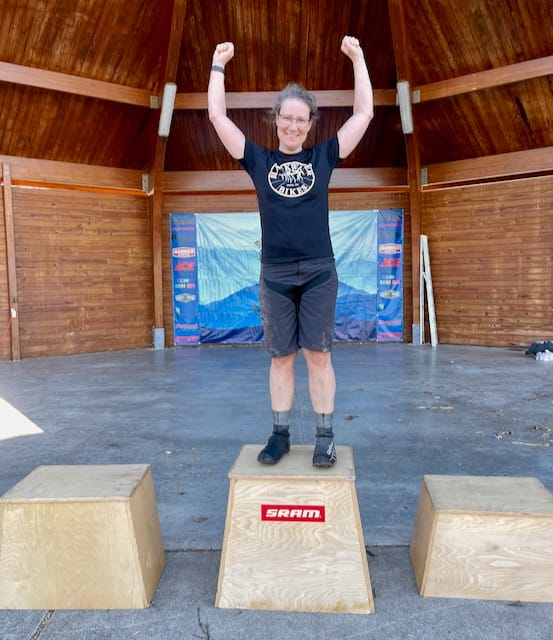
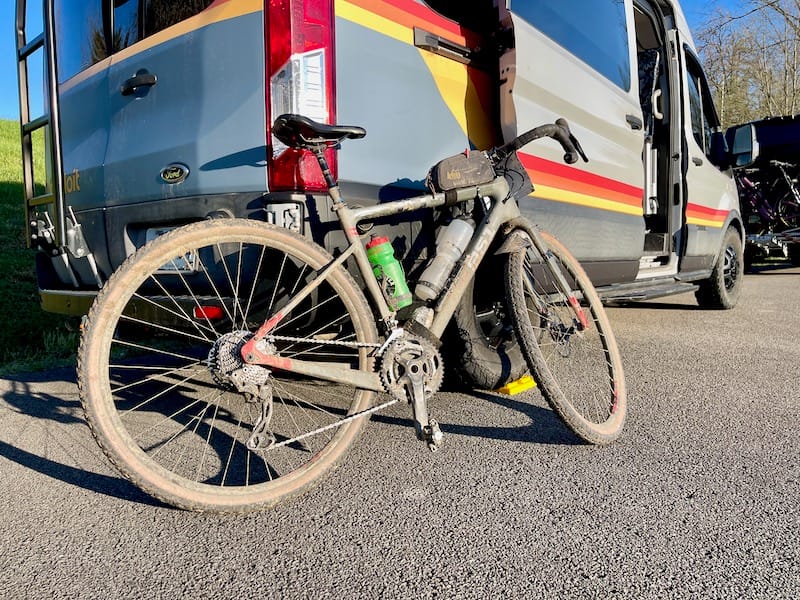
Follow me on X @vweeks and Instagram @victoria.weeks for daily meanderings.
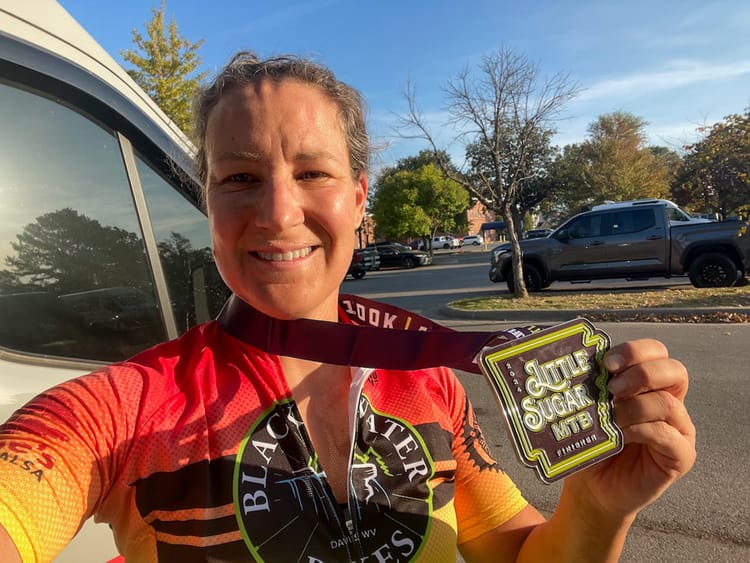
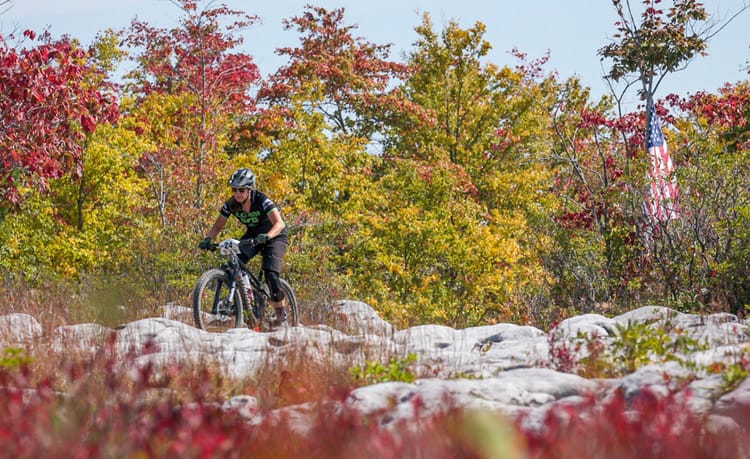
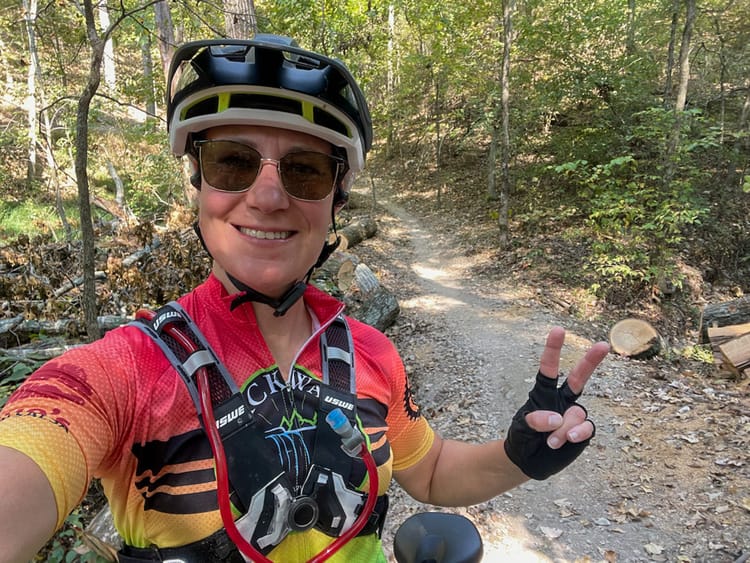
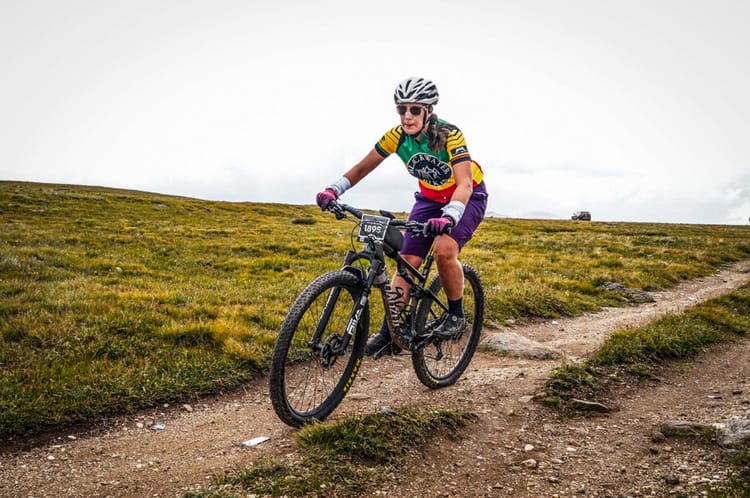
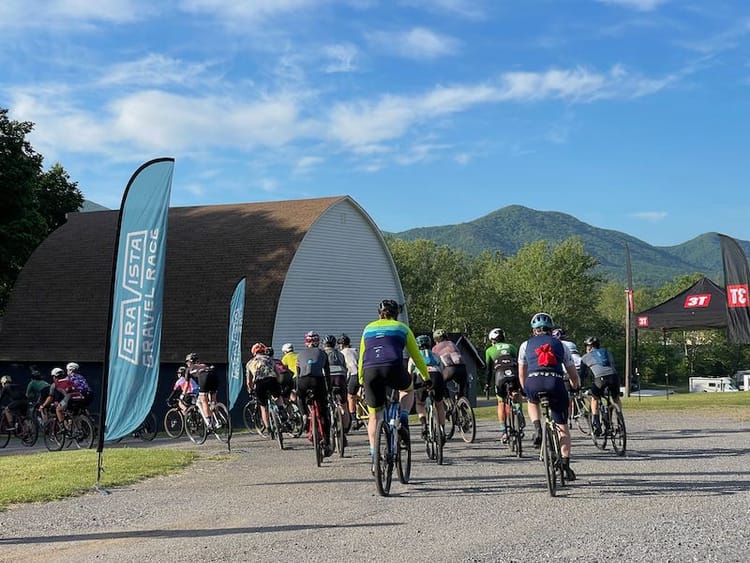
Member discussion